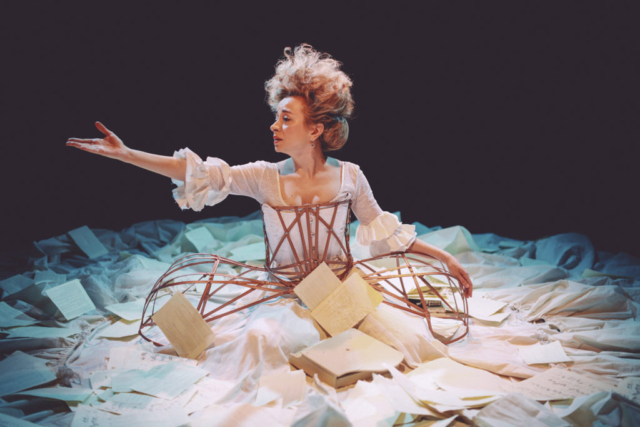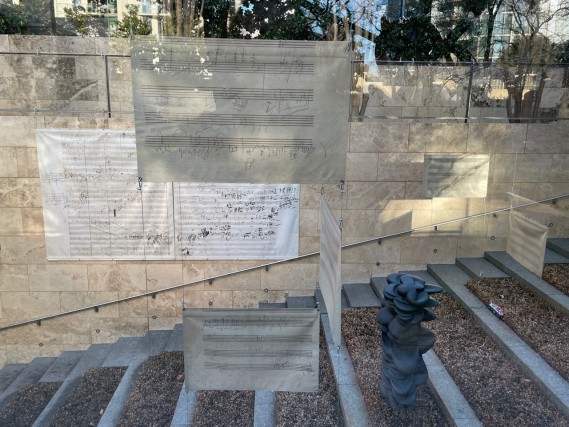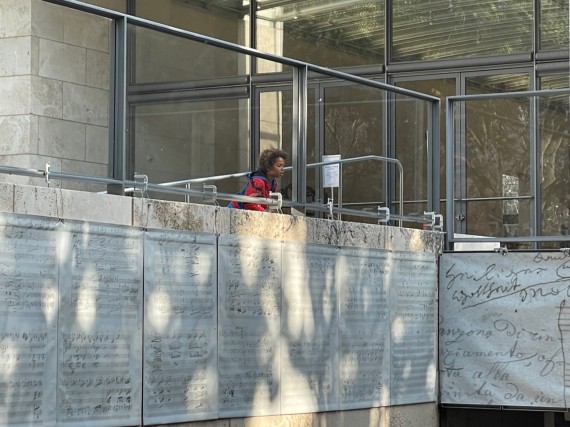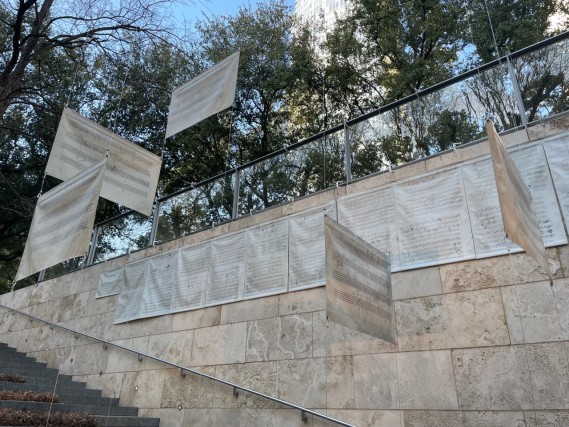Who is the other Mozart?
Nannerl Mozart was a child prodigy like her brother Wolfgang Amadeus, but her musical career came to an end when she was 18. A one-woman play puts her back on the stage. In September 2015, on the occasion of the 100th performance of her play The Other Mozart, actress Sylvia Milo writes about her inspiration and process.
"I am writing to you with an erection on my head and I am very much afraid of burning my hair”, wrote Nannerl Mozart to her brother Wolfgang Amadeus. What was being erected was a large hairdo on top of Nannerl’s head, as she prepared to pose for the Mozart family portrait.
It was that hairdo that drew my attention. Nine years ago I was visiting Vienna for the 250th birthday celebrations of Wolfgang Amadeus, and I was thrilled to explore the city following in Wolfi’s footsteps, many of which turned out to be Nannerl’s as well. At the Mozarthaus Vienna – Wolfgang’s apartment – on the exit wall, as if by an afterthought, there was a little copy of the Mozart family portrait. I saw a woman seated at the harpsichord next to Wolfgang, their hands intertwined, playing together. I grew up studying to become a violinist. Neither my music history nor my repertoire included any female composers. With my braided hair I was called “little Mozart” by my violin teacher, but he meant Wolfi. I never heard that Amadeus had a sister. I never heard of Nannerl Mozart until I saw that family portrait.
I was intrigued and determined to find out more. I read Wolfgang Mozart biographies, studied the situation of women and female artists during Mozarts’ time and in different countries, read writings of Enlightenment philosophers, conduct manuals … But the richest source of information came from the Mozart family letters. There are hundreds, and we have them because Nannerl preserved them. Most are written by Leopold and Wolfgang but some of Nannerl’s letters survived as well. Through these letters, sometimes only from the replies to her lost letters, Nannerl slowly emerged. I was able to understand the Mozarts as people, as a family, and through the lens of the times and the social situation in which they lived. I saw Nannerl’s potential, her dreams, her strength, grace and her fight.
Maria Anna (called Marianne and nicknamed Nannerl) was – like her younger brother – a child prodigy. The children toured most of Europe (including an 18-month stay in London in 1764-5) performing together as “wunderkinder”. There are contemporaneous reviews praising Nannerl, and she was even billed first. Until she turned 18. A little girl could perform and tour, but a woman doing so risked her reputation. And so she was left behind in Salzburg, and her father only took Wolfgang on their next journeys around the courts of Europe. Nannerl never toured again.
But the woman I found did not give up. She wrote music and sent at least one composition to Wolfgang and Papa – Wolfgang praised it as “beautiful” and encouraged her to write more. Her father didn’t, as far as we know, say anything about it.
Did she stop? None of her music has survived. Perhaps she never showed it to anybody again, perhaps she destroyed it, maybe we will find it one day, maybe we already did but it’s wrongly attributed to her brother’s hand. Composing or performing music was not encouraged for women of her time. Wolfgang repeatedly wrote that nobody played his keyboard music as well as she could, and Leopold described her as “one of the most skilful players in Europe”, with “perfect insight into harmony and modulations” and that she improvises “so successfully that you would be astounded”.
Like Virginia Woolf’s imagined Shakespeare’s sister, Nannerl was not given the opportunity to thrive. And what she did create was not valued or preserved – most female composers from the past have been forgotten, their music lost or gathering dust in libraries. We will never know what could have been, and this is our loss.
Director Isaac Byrne and I searched for the ghost of Nannerl, and the story she needed to tell in my one-woman play. Period-style movement transports us to the Mozarts’ time using delicate gestures, court bows and curtsies, and the language of fans.
To create the 18th-century world of opulence and of restriction, the set became an enormous dress which spills over the entire stage (designed by Magdalena Dabrowska), with a corset/panniers cage on top. Finally the hair stands as tall as Nannerl’s, after we found the right hairspray to hold it all up-up-up – and yes, it is all my own hair.
Creating music for the show was down to two composers, Nathan Davis and Phyllis Chen, who chose, rather than to try to re-create Nannerl’s compositions, to portray her musical imagination, using the sounds she would have had in her ears: the fluttering of fans, tea cups, music boxes, bells, clavichords.
I’ve been touring The Other Mozart for the last two years: this month marks its 100th performance, how fitting that it will take place just a few steps away from where Nannerl performed in London as a girl.
It has been a long journey to bring Nannerl back to England after an absence of 250 years. I sometimes feel like Leopold Mozart – on a quest to show the world this brilliant Mozart.
"Harriet, Scenes from the Life of Harriet Tubman"
On July 30th Yellow Barn's will present the American Premiere of Hilda Paredes' Harriet, Scenes from the Life of Harriet Tubman at the 2023 Summer Gala, followed by a general performance on July 31st. How did Harriet come to be, and what does it mean to perform it at a chamber music festival?
Hilda Paredes said, "After being invited by Universidad Nacional Autónoma de México to write a new opera, I asked my friend Claron McFadden if she would like to feature in this project and she immediately introduced me to Harriet Tubman. A six-year journey began then, discovering the extraordinary life and personality of Harriet Tubman. I always say and still think that if she had lived in the twentieth century she would have been awarded the Nobel peace prize."
After which Claron offered the following response by Zoom from Barcelona:
Find out more about the performance of Harriet at our Summer Gala on Sunday, July 30
Find out more about the general performance on Monday, July 31
Lei Liang's Six Seasons

Music Haul Flip Side: Baltimore
"Every citizen a storyteller." On this Fourth of July we cannot resist remembering our incredible Flip Side poets. We are proud to share their work with you, alongside Jennifer Curtis, violin, Charles Overton, harp, and Chase Morrin, piano. Thank you to the families of Saint Luke's Youth Center and The Park School of Baltimore. As CJ Williams proclaims at the end of his poem to Langston Hughes and Beethoven: "Baltimore is beautiful!"
Learn more about Yellow Barn Music Haul's Flip Side: Baltimore
Yellow Barn’s 2023 Summer Artwork

"Shut your eyes, wait, think of nothing. Now, open them ... one sees nothing but a great colored undulation...an irradiation and glory of color. This is what a picture should give us…a colored state of grace." (Paul Cezanne)I had been working in black and white for over twenty years before returning to my earlier infatuation with color. My watercolors are done on site, usually fairly quickly. I apply paint into wet paper, timing the drying of the paper as I lay in new washes of color. Painting in the landscape lets me sit happily observing light, color, and shape, simplifying or obscuring detail in favor of larger forms and the broader swell of color. I aim for a “color chord" or harmony that speaks of time, light, and distance all at once.—Brian Cohen
Beethoven Walks at the Nasher
Seth Knopp's Beethoven Walks at the Nasher, commissioned by the Nasher Sculpture Center in Dallas, TX, opened on February 5, 2023 and will remain open until May 21, 2023.
Ludwig van Beethoven left behind a vast visual record of his compositional process, a staggering reflection of the humanity that defines his music. Beethoven Walks at the Nasher Center incorporates sketches and the autograph manuscript with a recorded performance of one of the composer’s most profound and personal musical utterances, his “Heiliger Dankgesang eines Genesenen an die Gottheit, in der lydischen Tonart (Holy Song of Thanksgiving to the Deity from a convalescent, in the Lydian mode), the third movement of his String Quartet, Opus 132 completed in 1825.
View the visitor guide and listen to the recording
Recording:
Takács Quartet
Edward Dusinberre and Károly Schranz, violins; Roger Tapping, viola; András Fejér, cello
Used with permission from Decca
Beethoven Walks at the Nasher is dedicated to the memory of Roger Tapping, one of the great chamber musicians of our time and a beloved Yellow Barn faculty member for nearly 20 summers. The opening event took place on February 5th, Roger's birthday.

About Beethoven Walks
Beethoven Walks is a project begun in the early spring of 2020 during our collective isolation, serving a universal need to better understand our humanity through music and the beauty of our world. The first installations, produced by Yellow Barn in Putney, Vermont, spanned four miles of woodland trails and included nine works by Beethoven accompanied by over 180 pages of sketches and autograph manuscripts. Beethoven Walks at the Greenwood School in Putney remains open to the public.
Find out more about Beethoven Walks
Beethoven Walks was imagined and created by Seth Knopp and produced by Catherine Stephan.
Acknowledgments for Beethoven Walks at the Nasher
Banners
Howard Printing
John Kramer Design
Op.132 Autograph sketches and manuscript
Staatsbibliotek zu Berlin
Op.132 Recording
Decca Music Group, Ltd. (2004)
Installation
Nasher Sculpture Center







